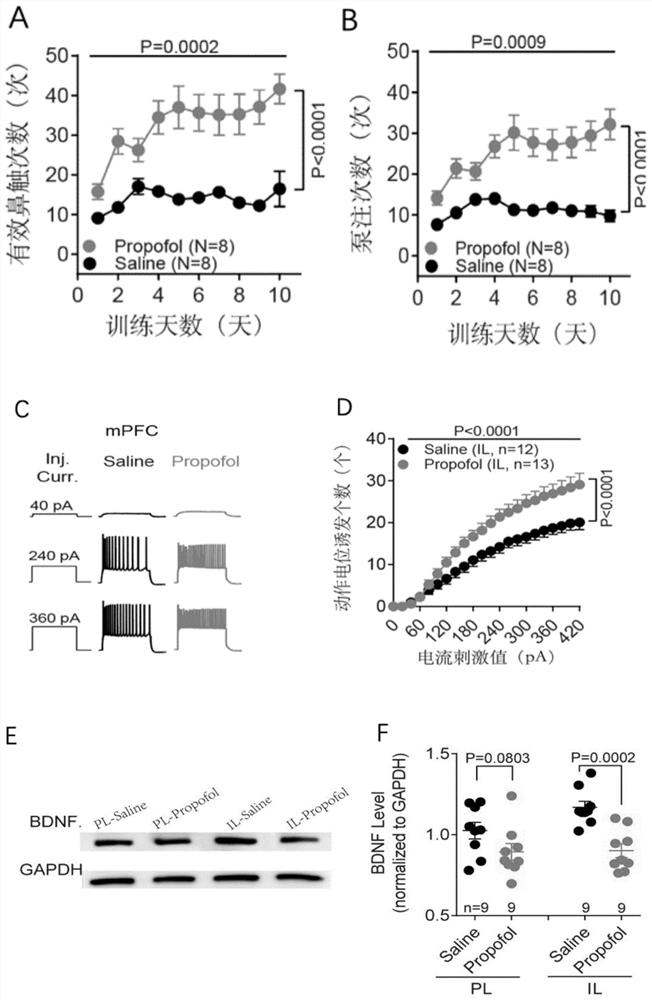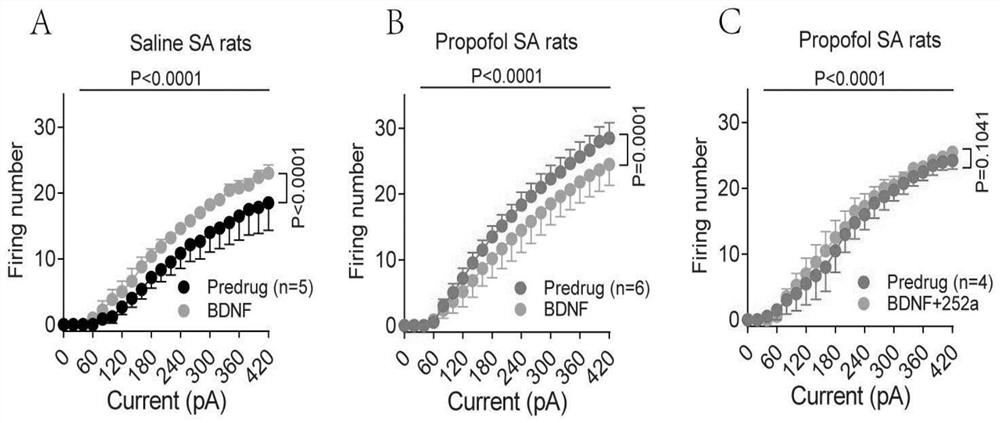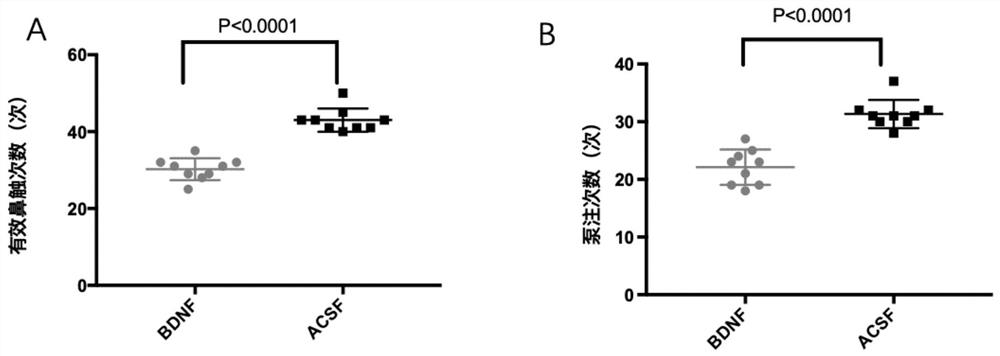Application of brain-derived neurotrophic factor in preparing medicine for preventing and treating propofol addiction
A technology of neurotrophic factor and propofol, which is applied in the field of medicine, can solve the problems of propofol abuse and imperfect control, and achieve remarkable effects, good industrialization prospects, and safe and stable application
- Summary
- Abstract
- Description
- Claims
- Application Information
AI Technical Summary
Problems solved by technology
Method used
Image
Examples
Embodiment 1
[0033] Example 1: Propofol can increase the excitability of cells in the mPFC area to produce addictive behavior, which is mainly related to the decrease of BDNF content in this area
[0034] The present invention first detects that long-term repeated injection of propofol can induce propofol self-administration behavior in rats, which is mainly related to the increase of neuron excitability in cortical mPFC area. Select 16 healthy male SD rats aged 7-8 weeks and divide them into two groups: propofol group and normal saline control group. The external jugular vein catheterization operation was performed on them. Dosing training. During the training process, the computer automatically records the number of effective nasal touch pump injections of the rats, so as to observe its own drug administration training situation. After the training, anesthetize with isoflurane and perfuse the NMDG liquid mixed with ice water to take the brain, cut the rat brain into coronal slices with ...
Embodiment 2
[0037] Embodiment 2: BDNF can suppress the excitability of propofol addiction rat mPFC area cell
[0038]The present invention first detects that long-term repeated injection of propofol can successfully establish propofol self-administration behavior, which is mainly related to the increased excitability of neurons in the mPFC area of the cortex. Select 16 healthy male SD rats aged 7-8 weeks and divide them into two groups: propofol group and normal saline control group. The external jugular vein catheterization operation was performed on them. Dosing training. During the training process, the computer automatically records the number of effective nasal touch pump injections of the rats, so as to observe its own drug administration training situation. After the training, anesthetize with isoflurane and perfuse the NMDG liquid mixed with ice water to take the brain, cut the rat brain into coronal slices with a thickness of 300um in a vibrating microtome, and collect the bra...
Embodiment 3
[0041] Embodiment 3: BDNF can suppress propofol self-administration behavior in rats
[0042] In Examples 1 and 2, the present invention found that the formation of propofol-addicted rats' addictive behavior may be related to the increased excitability of cells in the mPFC area and the reduction of BDNF protein content in this area, and this increased excitability can be suppressed by BDNF. Antagonized. In this example, the inventors found that after exogenously increasing the content of BDNF protein in the mPFC region, the self-administration behavior of propofol in rats was inhibited. Eighteen healthy male SD rats at the age of 7-8 weeks were used to implant intracerebral administration tubes in the mPFC region under the stereotaxic instrument for injection of BDNF or solvent-controlled ACSF, and self-administration of propofol for 14 days. medicine training. The successfully trained rats were randomly divided into two groups: normal control group and BDNF group. After th...
PUM
 Login to View More
Login to View More Abstract
Description
Claims
Application Information
 Login to View More
Login to View More - R&D
- Intellectual Property
- Life Sciences
- Materials
- Tech Scout
- Unparalleled Data Quality
- Higher Quality Content
- 60% Fewer Hallucinations
Browse by: Latest US Patents, China's latest patents, Technical Efficacy Thesaurus, Application Domain, Technology Topic, Popular Technical Reports.
© 2025 PatSnap. All rights reserved.Legal|Privacy policy|Modern Slavery Act Transparency Statement|Sitemap|About US| Contact US: help@patsnap.com



